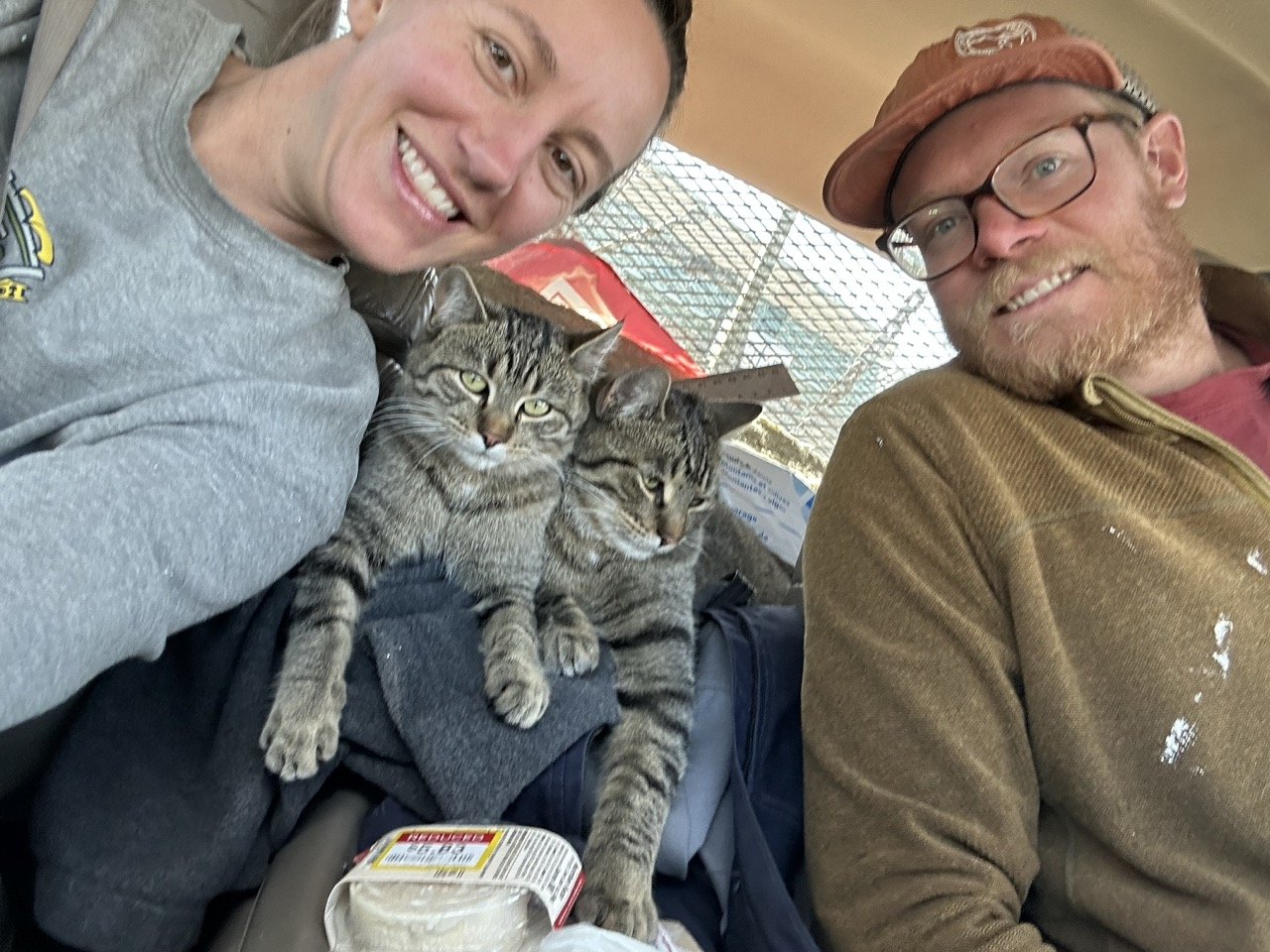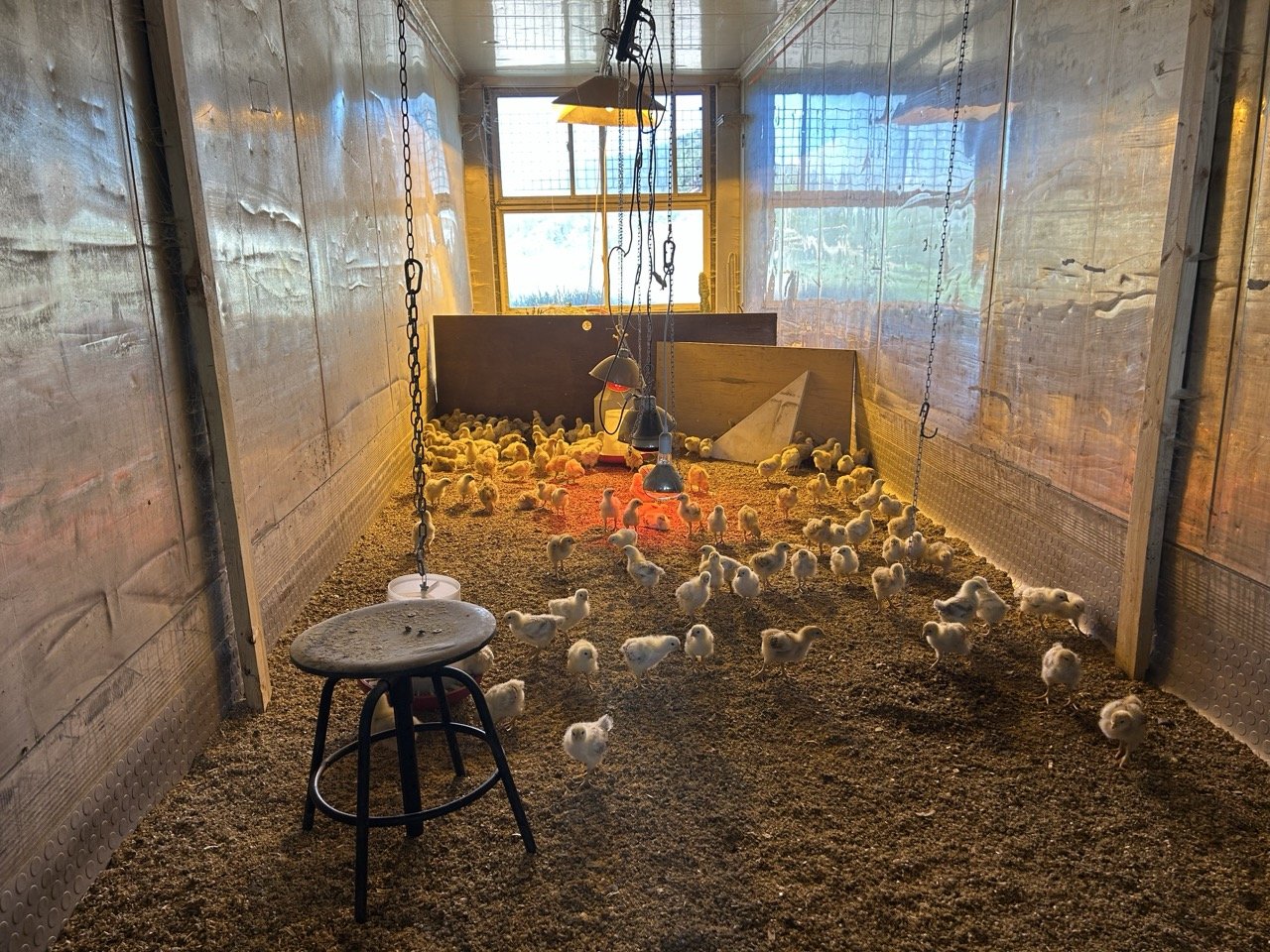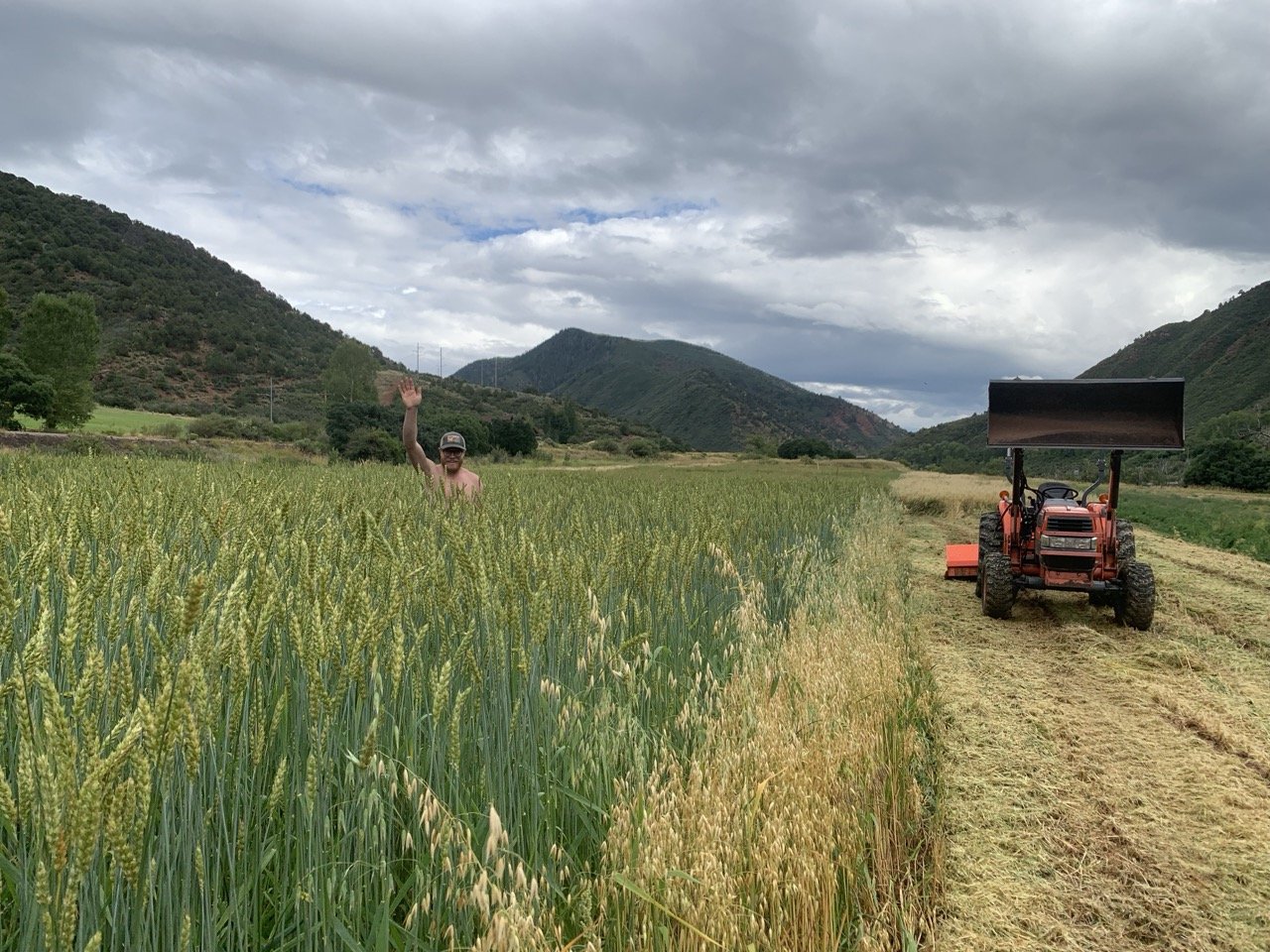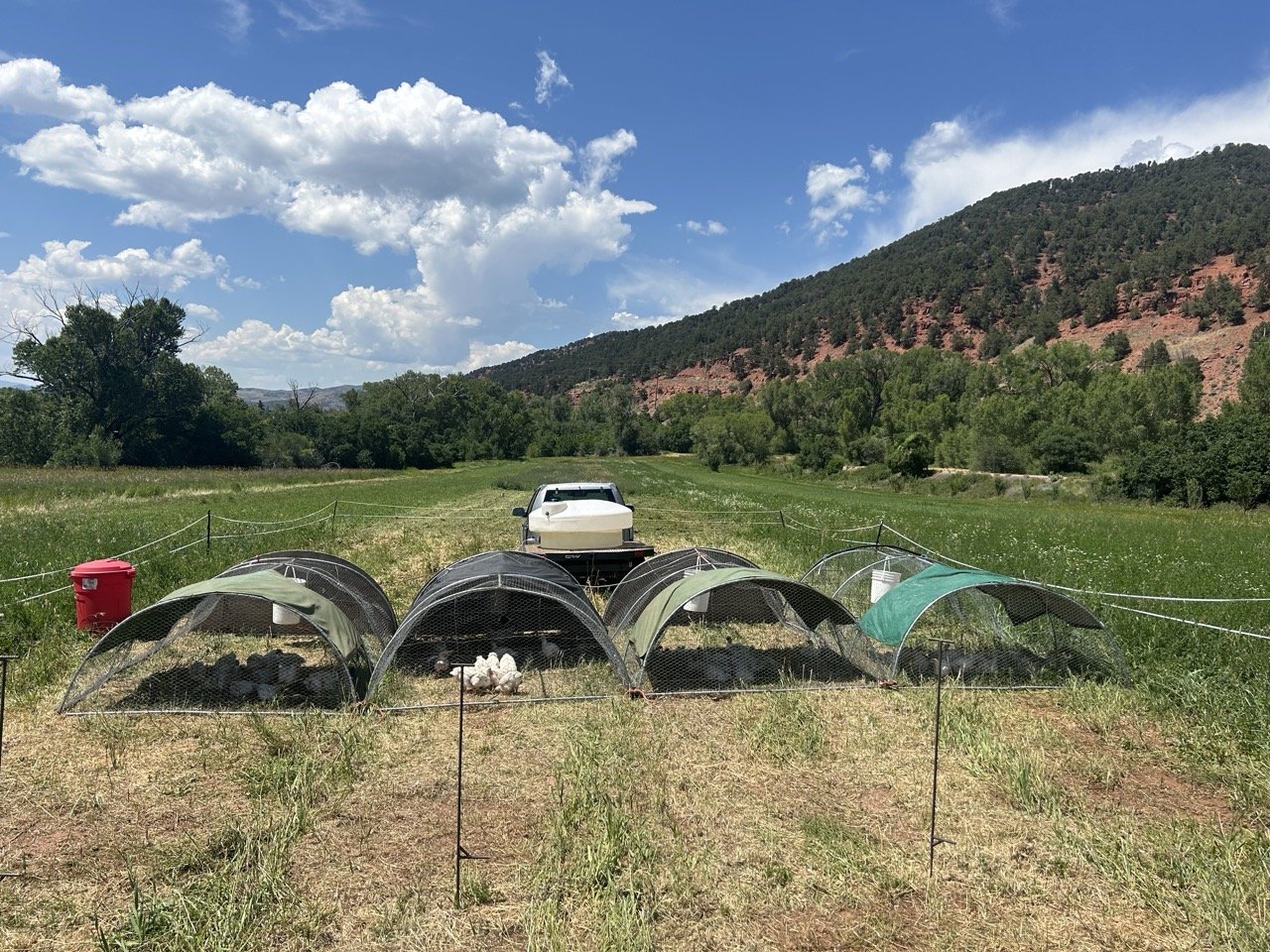Spring, as the Animals Live It
I'm the first one to roll my eyes at a dog owner who thinks their dog is the second coming of the Messiah yet doesn't know how to come when it's called. 🙄
I'm also the weirdo who has disappeared from a Google Meet to chase off, screaming, such a dog that's trying to eat my chickens; who has taken a coworker on a quick field trip when my ducks walk past in the background in search of food; who has been locked out of the car by cats at the hardware store and had to buy a crowbar at said hardware store to pry the door open and hit the unlock button.
And that's just the past month or two.
I really shouldn't judge (or so the saying goes, anyway. Let's be honest, it's fun to be a little judgmental, and it keeps us intentional. Just think of Matthew McConaughey's scraggly voice telling you and a bunch of college grads about the process of elimination. Identify all the things that aren't you— and figure out who you are).
Observing animals on the farm helps me figure out who I am in the context of the world's living things. Seeing how they interact with the world compels me to consider how I interact with the world, how I deal with all things that aren't food, water, and not getting eaten—things which most animals are generally unconcerned with.
Animals die, often as babies. They pick up habits from each other. They have incredible instincts to mother, to forage, to huddle together to stay warm.
This post, I feel I should tell you since its introduction has been meandering and reflective, is a glimpse of what the animals are up to this spring. Perhaps you will see yourself reflected in some of these simplicities.
Coco’s Adventure
About five weeks ago, our smallest and cuddliest cat Coco didn't come around one morning. Cooper noted it, and I didn't think it was noteworthy. When we didn't see her that night, or the next morning, I started to worry.
On the third night, I was an absolute mess. PMS didn't help; I watched a movie marathon and bawled.
When depression hits me, Coco—the award-winning snuggler she is—will snuggle like there is nothing else happening in the world. On the farm, we experience a lot of loss, both intentional and unintentional, but this one was hitting hard.
Our only hope was that Coco had gone into heat and ventured to find a tomcat. We'd decided not to spay her since there are no neighboring cats within a mile or more.
Turns out, she ventured twice that distance. The night following my sobfest, in desperation, I created a Nextdoor account and posted, then started to scroll. The very first post I read was a picture of a Coco-like cat. I commented, sent a DM, then Googled the woman until I found her number. Cooper called because I couldn't contain myself.
When we went to her house at 9pm to retrieve our little one, the woman said Coco was with an identical cat who ran off, but Coco was so friendly that she went right into the woman's arms.
It seems as though Coco's brother Gonzo had made the trek with her, and returned before we ever knew he was gone.
It seems as though perhaps they both would have done so, if only Coco didn’t love on everyone so hard!
Coco stayed especially close after that, and we had a feeling she may have gotten what she was after. Her nipples got more pronounced, she started drawing a line and standing her ground when the other cats tried to wrestle, and we knew she was pregnant.
As I write this, she's laughably wide—an adorable little mama with kittens in her belly. Watching her instincts kick in to protect herself, rest a lot, eat a lot, and stay close to home is pretty amazing. So much knowing waits inside DNA.
Are They a Throuple?
Motherhood is in the air for the ducks too. We started the year with five until a pair ran away together. The group had started to split itself, the alpha male hanging with both girls while the other two boys waited at home for them all to return.
Reepacheep, though, being the matriarch she is, would sometimes stay with the lost boys, bringing the whole crew back together. My theory is that the pair—the alpha male Khaki and the Appleyard hen—discovered the river and accidentally made their way too far downstream to find their way back, leaving Reepacheep to the bestie boys.
Now, Reepacheep sits on a big clutch of eggs on her floating island in the pond. The boys spend a lot of their time sunbathing on the edge of the pond or foraging at the water's edge. Our fingers are crossed for Reepacheep, especially after yet another unsuccessful incubation we did with some of Reepacheep's and Appletini II's eggs, which she left behind before running off into the sunset with her fella.
The Incubator
I had high hopes for this incubation, as I saw clear development in the majority of eggs every time I candled them (i.e., held a light up to the air pocket of the egg while in a dark room)—they had veins, then pulsing hearts, then big dark shadows as the embryos grew.
Duck eggs generally hatch on Day 28, Day 0 being the first day they are in consistent temperatures of about 99.5 degrees and about 60% humidity. On Day 25, I candled them all before locking down the incubator: removing the eggs from the rails that rotate slowly in order to turn the eggs so that the ducklings don't stick to the inside of their shells, and placing them on a mat inside the incubator where they position themselves for hatching.
Only one egg out of a dozen showed obvious movement, but they all had dark shadows.
One duckling hatched on the night of Day 28. We left the little thing in the incubator until the evening of Day 29. They actually absorb their first meal just before hatching and should get a little fluffy before they're removed from the incubator; plus opening it disturbs the other eggs.
Warning: this post is about to get graphic.
Despite the little duck's relentless peeping, none of its siblings arrived. We left them in the incubator until Day 31—which is about as late as any egg would hatch—risking a rotten egg explosion in the process.
I wanted to understand when they died. So, Cooper provided moral support and cracked the eggs in the yard (from a few feet away; he has vivid experiences with exploding eggs), and I investigated.
This was disgusting, really. Like, very. But of the four or five eggs I pulled apart, at least two of them had fully formed ducklings coated in a thick blanket of egg white.
My theory: they developed well but then couldn't pierce their beak into the air pocket. Our incubator holds the eggs vertically, pointy side down, and turns them side to side. In a nest, and in many incubators I've seen online, the eggs lay on their sides and roll around. Perhaps the vertical position is just too restrictive for the forming ducklings who, if laid freely on their side, would have more opportunity to move around and position themselves as they need to.
A Chick and a Duckling
I didn't want the little survivor to grow up alone, so I took one of our layer chicks out of the brooder to keep the duckling company. We plan to buy a few ducklings at the hardware store, since raising one duckling is the same amount of work as raising a few, and to avoid giving either the duckling or the chick an identity crisis.
The brooding chicks: there are about 170 of them.
We got a few chicks to replenish our laying stock, and the rest are meat birds. They'll grow from tiny chick to football size in about 6 weeks, at which point we'll move them onto the field.
These chicks are about a week old. They grow fast!
Cooper’s Coops
My husband has built some crazy things, like a truck out of a CRV. He’s all about repurposing and multi-function — and ideally, both. It’s not surprising he’s developed an innovative system for raising meat chickens on pasture.
Here’s how it works.
In late winter, he seeded the field with a mix of peas, flax, oats, rye, and buckwheat—a mix that provides a pretty complete diet for chickens. Around the same time the chickens are big enough to move outside, this mixed planting will be, ideally, going to seed. Cooper will mow a strip of the field, and we'll place the chicken coops on one end of them.
Last year’s chicken feed crop freshly mowed down next to neck-high red wheat
The four coops, connected to each other with rope and a long pole, are also connected to a winch system. Cooper hooked up this system to a timer so that every day, the winch pulls the coops ever so slowly, moving the chickens onto a new patch of pasture with fresh alfalfa greens, bugs, and seeds.
Their water is also pulled along with the coops in a 200-gallon plastic tank with drip lines that pull water out of it into 5-gallon buckets with nipples that come out of the bottom.
The result: a fully automated system that provides fresh water, sunlight, shade, pasture to forage on, and protection from predators.
We still visit the chickens daily to make sure the system's working, and to give each coop of about 30–40 birds a scoop of additional feed as well as simple love and attention. We reset the system—the winch, the water tank, and the electric fence that surrounds the whole thing—every week or two.
This rotational grazing system saves us time, creates a lot of flexibility for us, cuts down on the cost of feed, and supports life in the soil.
The Miracle of Existing
So a few days ago, when the chicks arrived and we watched them instinctually take their first sips of water, throwing their little heads back to swallow, and fall asleep right on their faces, we smiled, knowing they would live happy lives and ultimately provide a lot of joy and nourishment.
Supporting and being supported by so much life on the farm is a big part of what inspires us to live this lifestyle.
All these cycles and dynamics happening around us keep our minds and hearts focused. It feels like decluttering in my being, to notice the subtle behavioral shift of a gestating cat, the anxious and noisy longing of a lone duckling, the vigor and playfulness of a healthy chick, the quiet of death, the mysterious miracle of existing.






